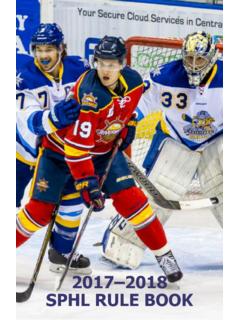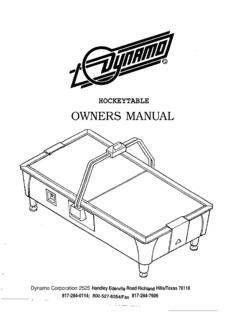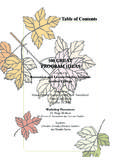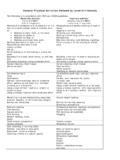Transcription of SUMMER STRENGTH AND CONDITIONING …
1 2006 SUMMER STRENGTH AND CONDITIONING PROGRAM THE ROAD TO THE NCAA TOURNAMENT STARTS HERE!!! THE ROAD TO THE NCAA TOURNAMENT STARTS HERE!!! table OF CONTENTS SECTION 1 hockey NUTRITION SECTION 2 DRUG AND SUPPLEMENT USE SECTION 3 MUSCLE INDEX SECTION 4 FLEXIBILITY TRAINING SECTION 5 WEIGHT TRAINING FOR hockey SECTION 6 PLYOMETRIC TRAINING SECTION 7 AEROBIC TRAINING SECTION 8 ANAEROBIC TRAINING SECTION 9 AGILITY TRAINING SECTION 10 TEAM STANDARDS SECTION 11 TRAINING GOALS SECTION 12 TRAINING CALENDAR The Merits of hockey Specific Training In 1988, Joe Sakic was named the Canadian Major Junior Player of the Year. He was awarded playoff MVP honors and helped the Colorado Avalanche win the Stanley Cup in 1996. Sakic has averaged more than points per game.
2 He could always contribute goals and assists, but in between Sakic s junior career and his current status as one of the NHL s elite players, he has developed into a well-rounded skill player. This can be traced back to his CONDITIONING efforts with the Quebec Nordiques. As a junior, I trained a bit in weights, but only upper body. No leg work and no CONDITIONING for things like quickness, agility or aerobic endurance, explains Sakic. At my second junior camp I put on a little weight and did not feel great, so from then on I did not train very much. But now I know that this was because I did not train specific for ice hockey . In 1991, my third year, I was invited to tryout for Team Canada for the Canada Cup Tournament. At the end of the camp I was told that I needed to improve my leg STRENGTH .
3 Going into my fourth year, I met Lorne Goldenberg, CONDITIONING coach for the Nordiques. Lorne explained to me the importance of developing the legs for hockey , as well as how to train specifically for my sport, Sakic explains, I worked hard that SUMMER for the first time in my career and as a result of Coach Goldenberg s CONDITIONING program I felt great for the first time in training camp. I was faster and quicker on my feet. I did not feel as fatigued in camp as I had in previous years. Sakic s development is evident in his six consecutive NHL All-Star team selections and his gold medal in 1994 at the World Championships. Joe is one of those few highly skilled players who could probably get by on just skill alone, says Goldenberg. But the key is that Sakic doesn t just get by, he tries to get the best performance possible from himself.
4 Joe s body weight fluctuates between 180 and 185 pounds. He is squatting over 400 pounds and he is bench pressing over 300 pounds, and is always at the head of the pack in our plyometric tests, says Coach Glodenberg. It is this combination of STRENGTH , speed and power that allows this small, skilled player to play with the STRENGTH of a power forward, and the speed of one of the quickest skaters in the NHL. These attributes, and his overall development were obvious to everyone following his dominance in the 1996 Stanley Cup playoffs. THE ROAD TO THE NCAA TOURNAMENT STARTS HERE!!! hockey NUTRITION THE ROAD TO THE NCAA TOURNAMENT STARTS HERE!!! hockey NUTRITION A well-balanced diet will provide all the nutritional and caloric needs of an individual.
5 Since hockey players are constantly burning off calories and breaking down tissue, the food they need is food that supplies all the nutrients necessary for repair, growth and energy. The foods in a well-balanced diet fall into four major groups: milk group, meat group, fruit/veggie group, and grain group. These food groups fulfill the body s needs for protein, fat, carbohydrates, vitamins, and minerals, which are the basic nutrients needed by the body. For athletes such as hockey players, carbohydrates would be the major source of intake, at least 50%, followed by protein and fat intake. On the average, the basic diet should consist of approximately 10-20% protein, 20-30% fat and 50-70% carbohydrates. Protein is found throughout the body and serves numerous functions: Maintain and repair body tissues Make hemoglobin that fight infection and disease To supply energy during starvation Form antibodies that fight infection and disease Fat is also found through the body and serves several functions: Insulates nerves and body tissue Forms the cell walls Protects internal organs Concentrated source of energy As mentioned earlier, carbohydrate intake should be about 50-70% for the athlete.
6 Minimum protein intake should be .8 grams per kilogram body weight, but it has been recommended that athlete under heavy stress, both physically and emotionally, take in approximately grams per kilogram body weight. The remaining calories should be supplied by manipulating fat intake. Adjustments in caloric intake are most easily manipulated by fat intake as fat supplies more than twice the energy value per gram as either carbohydrates or protein. Fat contains 9 Kcal per gram as compared to carbohydrates or protein which supply 4 Kcal per gram each. Carbohydrates, as mentioned, should be the main staple in the diet since they spare protein from being used as energy and facilitate the use of fats as energy. Once the carbohydrate source are drained from the body, fats can no longer be used as an energy source and the athlete experiences exhaustion.
7 (see handout: How To Select The Diet For You.) This chart includes the basic diet, the training diet and the carbohydrate loading diet. The hockey player would naturally follow the training diet during the course of the season, but in the off-season, alterations must be made for decreased energy expenditure. (See chart: What You Nee To Know About A Training Diet.) THE ROAD TO THE NCAA TOURNAMENT STARTS HERE!!! DAILY ENERGY RECOMMENDATIONS FOR NORMALLY ACTIVE MALES Males Age Energy Needs (years) Total Energy Kcal Calories Per Pound 11-14 2700 27 15-18 2800 19 19-22 2900 19 23-50 2700 18 51-75 2400 16 76+ 2050 13 To determine actual caloric needs.
8 Refer to the cart Daily Energy Recommendations For Normally Active Males above. In addition to these basic requirements, the hockey player will need to keep track of additional calories consumed during training and add these to the basics. hockey players should allow about 600-800 Kcal per hour extra for caloric expenditure. So if a 19-22 year old 200 lb. hockey player plays intensely for 2 hours, he would determine his age related daily energy expenditure (200 lb. x 19 Kcal += 3800 Kcal), then add approximately 1600 Kcal (800 Kcal/hr.) to compensate for exercise expenditure for a total of (3800 Kcal + 1600 Kcal = 5400 Kcal). To insure that an athlete is meeting both nutritional requirements and maintaining adequate hydration levels, they should be weighed daily prior to breakfast, post urination and without clothing.
9 This will insure accurate and consistent measurements by minimizing error. The spacing and number of meals per day is also a major factor associated with hockey players. Research suggests that eating fewer and larger meals (2-3 per day) impairs glucose tolerance and increases body weight and fat content. It is suggested that athletes eat 3 moderate meals-breakfast, lunch and dinner-and interspersed among these meals are 3 snacks in order to increase the consumption of added calories required for training. The best way to obtain all the required nutrients is to eat a well-balanced diet. For athletes requiring excess calories to facilitate training/competition, eating larger portions and snacks that are well balanced will also allow proportional increases in nutrients.
10 How to Gain Quality Weight Basics: 1. There are two ways to gain body weight: a. Consume more calories than you burn off (diet). b. Burn off fewer calories than you consume (less exercise). Since we want to continue high intensity exercise, (b) is not feasible. Consuming more calories is the best way; however, the type of high calorie food is important. Constantly eating junk food will put weight on but not in the form of lean body weight. Fat weight is counterproductive; it costs more energy just to move it around. Foods such as fresh fruits, grain products, and most vegetables are high in carbohydrates (and calories) but have a nutritional bonus of extra vitamins and minerals. Get your carbohydrates from these sources. THE ROAD TO THE NCAA TOURNAMENT STARTS HERE!






